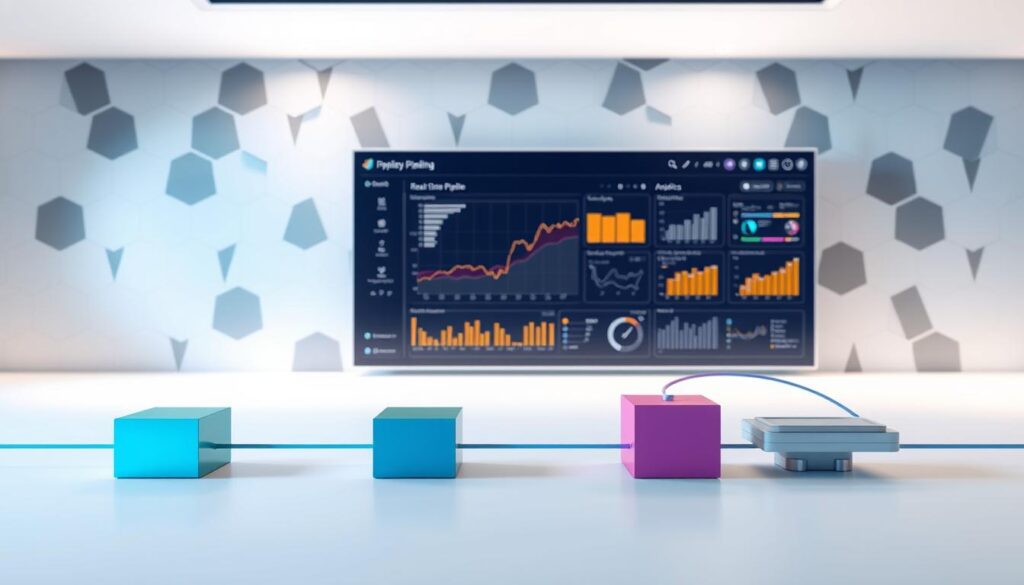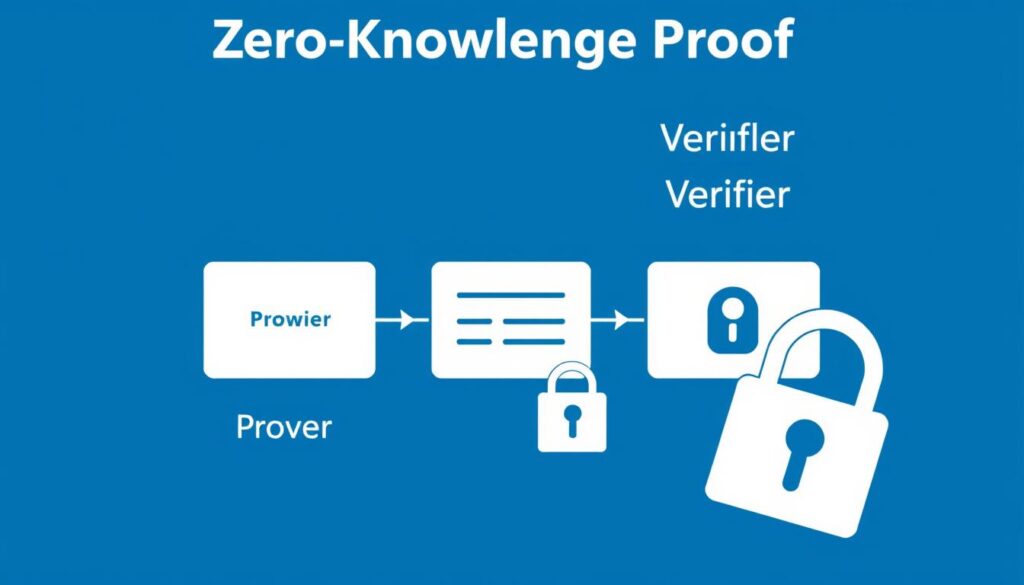Now Reading: AI Blockchain Security Threat Detection for Secure Transactions
- 01
AI Blockchain Security Threat Detection for Secure Transactions
AI Blockchain Security Threat Detection for Secure Transactions

Modern digital ecosystems handle enormous volumes of valuable assets through automated systems. These platforms process everything from financial transactions to unique digital collectibles. The complexity of these operations demands robust protection mechanisms.
Smart contracts have become the foundation of decentralized applications. They manage significant value across various platforms including financial protocols and digital marketplaces. This automation brings incredible efficiency but also introduces new challenges.
Traditional security approaches struggle to keep pace with evolving risks in these environments. The need for intelligent monitoring has never been more critical. Organizations require solutions that can anticipate problems before they impact operations.
The combination of advanced analytical capabilities with distributed ledger technology creates powerful frameworks. These systems offer real-time monitoring and predictive capabilities that enhance protection. They represent a fundamental shift in how we safeguard digital transactions.
Key Takeaways
- Modern digital ecosystems require advanced protection for handling valuable assets
- Smart contracts form the backbone of decentralized applications across multiple platforms
- Automation introduces both efficiency and new security challenges
- Traditional approaches cannot adequately address evolving risks in complex systems
- Intelligent monitoring provides real-time protection and predictive capabilities
- The integration of analytical technologies with distributed ledgers creates resilient frameworks
- These solutions represent a necessary evolution for organizations operating at scale
Introduction to AI Blockchain Security Threat Detection and Secure Transactions
Self-executing programs that automate agreement enforcement form the foundation of today’s decentralized application ecosystems. These automated contracts handle valuable resources while operating across distributed networks.
Defining the Key Concepts
Smart contracts represent self-executing programs that automatically enforce agreements without intermediaries. They manage digital assets and sensitive information across various platforms.
Advanced analytical technologies work together to create comprehensive protective frameworks. Machine learning and pattern recognition systems analyze transaction data to identify potential issues.
Importance for Modern Blockchain Systems
Transaction integrity and data transparency are fundamental requirements for widespread adoption. These elements build user confidence across financial and commercial applications.
Traditional protective approaches struggle with the unique challenges of decentralized environments. Modern systems require continuous monitoring and real-time analysis to maintain operational reliability.
The combination of intelligent analysis with distributed ledger technology creates resilient frameworks. These solutions provide automated responses that preserve system integrity during high-volume operations.
The Evolution of Blockchain Security and the Role of AI
Early protection methods for self-executing contracts relied heavily on manual examination by skilled programmers. These experts would carefully review each line of code to identify potential issues before deployment.

This approach worked well for simpler applications but became impractical as systems grew more complex. The time-consuming nature of manual reviews created bottlenecks in development cycles.
From Manual Audits to Automated Intelligence
Traditional auditing processes required significant human effort and expertise. Each contract review depended entirely on the auditor’s knowledge and attention to detail.
The emergence of advanced analytical technologies transformed this landscape. These systems can process vast amounts of code quickly, identifying patterns that might escape human notice.
Modern tools complement human expertise rather than replacing it entirely. This hybrid approach combines the efficiency of automation with the judgment of experienced developers.
Historical Challenges in Smart Contract Security
Several high-profile incidents highlighted the limitations of early protection methods. These events demonstrated how coding errors could lead to significant asset losses.
The immutable nature of deployed contracts created additional complications. Once live, fixing discovered vulnerabilities became extremely difficult.
Systems must continuously adapt to address emerging threats. The dynamic nature of digital environments requires equally dynamic protection strategies.
Learning from past incidents helps improve future safeguards. Each challenge provides valuable data for enhancing protective measures.
How Traditional Auditing Compares to AI-Powered Auditing
Modern analytical tools have revolutionized the way programming errors are identified in automated agreements. The verification process now combines multiple layers of examination for comprehensive assessment.

This evolution represents a fundamental shift from older methods. Today’s systems offer more thorough coverage and faster results.
Manual Code Reviews vs. AI-Driven Analysis
Traditional verification relied on skilled developers examining each line of code. This manual approach required extensive expertise and careful attention.
The process was time-consuming and expensive. It also depended heavily on individual auditor knowledge levels.
Contemporary tools employ sophisticated analytical techniques. These systems scan source code using static and dynamic methods.
They identify syntax issues and behavioral patterns efficiently. The detection capabilities exceed what human reviewers can achieve manually.
| Aspect | Manual Review | Automated Analysis | Impact |
|---|---|---|---|
| Speed | Days to weeks | Minutes to hours | Faster development cycles |
| Consistency | Varies by auditor | Standardized results | Reliable assessments |
| Coverage | Limited by human focus | Comprehensive scanning | Fewer missed issues |
| Cost | High labor expenses | Efficient resource use | Better budget management |
The optimal approach combines both methodologies. Human expertise validates complex logic while automated tools handle routine checks.
This hybrid method strengthens the overall verification process. It ensures thorough contract examination without sacrificing speed.
Implementing AI Blockchain Security Threat Detection for Secure Transactions
Effective implementation strategies focus on integrating verification tools throughout the software creation process. This approach ensures protective measures are embedded from the earliest stages rather than added as an afterthought.

Integrating AI Tools into Development Pipelines
Modern development workflows benefit from incorporating automated scanning directly into continuous integration systems. These tools analyze code during compilation and build processes.
They catch syntax errors and basic vulnerabilities before human review. This early detection significantly reduces remediation costs.
The integration creates a feedback loop that improves coding practices over time. Developers learn to write more secure code from the beginning.
Establishing Automated Pre-Audit Scans
Automated pre-audit scans run during every code commit and merge operation. They provide immediate feedback on potential issues.
Teams can configure sensitivity levels based on project requirements. Custom rule sets address specific application needs.
This systematic approach ensures consistent verification across all development activities. It builds confidence in the final product’s reliability.
Integrating AI Tools into Blockchain Network Monitoring
Network surveillance represents the frontline defense for maintaining operational integrity across decentralized platforms. These systems provide constant oversight of digital asset movements and contract interactions.
Modern monitoring solutions establish comprehensive visibility across entire distributed computing infrastructures. They track multiple data points to build complete operational intelligence.
Real-Time Threat Detection Strategies
Sophisticated monitoring systems create digital sentinels that watch over distributed ledger operations continuously. They analyze transaction frequencies and interaction patterns to identify unusual activities.
These tools establish baseline patterns of normal network behavior using statistical analysis. Machine learning algorithms then detect deviations that warrant investigation.

The systems provide early warning capabilities that enable proactive mitigation. This prevents potential breaches before they impact operations or user trust.
Continuous Monitoring for Anomalies
Continuous oversight mechanisms transform how organizations protect their digital transaction environments. They scan modified contract versions in real-time and alert on anomaly trends.
Automated response mechanisms trigger when suspicious patterns are identified. These include blocking questionable IP addresses and quarantining compromised contracts.
Best practices involve configuring monitoring thresholds and alert sensitivity levels. This balances comprehensive protection with minimizing false positives.
Integration with existing security operations centers provides unified visibility. The approach ensures coordinated response across all infrastructure components.
Identifying and Addressing Smart Contract Vulnerabilities with AI
Automated contract analysis systems have transformed vulnerability identification by recognizing subtle coding patterns that often escape human review. These advanced tools provide comprehensive scanning capabilities that protect digital assets and maintain system integrity.
Recognizing Common Vulnerabilities
Modern analytical systems detect several critical vulnerability types in self-executing agreements. Reentrancy attacks allow malicious contracts to make recursive calls before state updates complete. This can drain funds unexpectedly.
Integer overflow and underflow issues occur when arithmetic operations exceed storage limits. Access control errors happen when permission checks are missing or misconfigured. These vulnerabilities can compromise contract integrity.
Timestamp dependency exploits manipulate block timestamps to change outcomes. Gas limit problems arise from inefficient code causing transaction failures. Each vulnerability presents unique risks to contract operations.
Leveraging Pattern Recognition and Machine Learning
Advanced systems use machine learning algorithms trained on historical exploit data. They compare new code against known attack signatures. This enables immediate identification of potential weaknesses.
Pattern recognition capabilities allow these tools to spot variations of previous attacks. They analyze transaction behavior to establish normal baselines. Deviations from these patterns trigger alerts for suspicious activities.
These analytical approaches continuously improve through supervised learning. They incorporate data from newly discovered exploits. This comprehensive vulnerability detection system provides robust protection for all contract types.
Best Practices for Continuous and Dynamic Security Adjustments
Effective protection management involves regular updates and intelligent response mechanisms for digital operations. Organizations must treat security as an evolving process rather than a fixed implementation.
Modern systems can automatically adjust protection levels based on current network conditions. During periods of heightened risk activity, these systems might increase verification requirements for transactions.
Adapting to Evolving Threat Landscapes
Continuous learning systems update their protection models using emerging attack pattern data. This approach ensures measures stay current with the latest vulnerability disclosures.
Intelligent frameworks incorporate external risk intelligence feeds seamlessly. They analyze research findings to anticipate new attack vectors before they impact operations.
Risk management frameworks help organizations balance protection requirements with operational efficiency. They guide resource allocation decisions based on current priority levels.
| Security Approach | Update Frequency | Automation Level | User Impact |
|---|---|---|---|
| Static Policies | Manual updates | Low | Frequent disruptions |
| Dynamic Adjustments | Continuous | High | Minimal interference |
| Hybrid Model | Scheduled reviews | Medium | Balanced approach |
Regular security assessments validate protection effectiveness through penetration testing. These exercises identify gaps requiring adjustment in the overall approach.
Establishing clear governance processes defines roles and escalation procedures. This maintains user confidence by demonstrating commitment to asset protection.
Leveraging Predictive Risk Modeling and Behavioral Analytics in Blockchain
Forward-thinking organizations now employ predictive modeling to anticipate potential issues in distributed systems. These advanced approaches transform protection from reactive to proactive.
They analyze vast amounts of historical information to forecast future challenges. This enables teams to address vulnerabilities before they impact operations.
Using Historical Data for Threat Forecasting
Predictive systems examine past incident reports and audit findings. They identify recurring patterns in exploit attempts.
Machine learning algorithms process this information to calculate risk probabilities. The models continuously refine their forecasts as new data becomes available.
This analytical intelligence helps prioritize resource allocation. Teams can focus on the most probable and impactful threats.
Implementing Behavioral Analysis Systems
Behavioral analysis establishes normal patterns for user activities and contract interactions. It monitors transaction flows across connected applications.
These systems flag deviations from established baselines. Unusual access patterns or privilege escalations trigger immediate alerts.
The approach maintains user privacy while ensuring system integrity. It provides transparency in monitoring without compromising sensitive information.
| Analytical Approach | Primary Data Source | Detection Capability | Response Time |
|---|---|---|---|
| Predictive Modeling | Historical incident data | Future threat probability | Pre-incident |
| Behavioral Analysis | Real-time network activities | Current anomaly detection | Immediate |
| Combined Framework | Multiple data streams | Comprehensive coverage | Proactive and reactive |
Combining these methodologies creates a robust management framework. Organizations gain comprehensive visibility into potential risks across their entire operation.
Exploring Advanced AI Solutions for Smart Contract Audits
Advanced analytical technologies are revolutionizing how developers verify the reliability of self-executing agreements. These sophisticated solutions provide deep analysis that goes beyond simple syntax checking.
They enhance code integrity and protect digital assets within complex decentralized applications. This represents a significant leap in technology for securing automated transaction environments.
Overview of Leading AI-Driven Audit Tools
Several powerful tools now dominate the market for smart contract verification. MythX combines static and dynamic analysis to find issues in Ethereum contracts.
Slither offers rapid static scanning of Solidity code. It provides optimization metrics alongside vulnerability detection.
Other notable solutions include Securify, Oyente, and SmartCheck. The ConsenSys Diligence suite combines traditional logic checks with advanced fuzz testing.
Enhancing Code Integrity with Natural Language Processing
Natural Language Processing (NLP) adds a crucial layer of contextual intelligence. This technology reads developer comments and documentation.
It verifies if the code implementation matches the described intent. This cross-checking prevents logic mismatches that other methods might miss.
NLP-enhanced analysis strengthens overall code integrity. It helps maintain user trust and reduces privacy risks by ensuring contract behavior aligns with expectations.
This contextual understanding is a key advantage of modern audit tools. It represents the next frontier in smart contract safety.
Overcoming Limitations and Enhancing AI-Powered Blockchain Security
While automated auditing systems offer significant advantages, they still face certain operational challenges that require human oversight. These limitations impact how organizations implement comprehensive protection strategies for their digital operations.
Addressing False Positives and Complex Logic
Automated systems sometimes flag legitimate code patterns as potential issues. These false alerts can overwhelm development teams and obscure genuine vulnerabilities.
Complex contract logic presents additional challenges for automated analysis. Multi-contract dependencies and governance mechanisms require contextual understanding that current technologies struggle to provide.
Machine learning models may miss novel attack patterns that differ from training data. This creates gaps in protection coverage that require complementary approaches.
Balancing Automation with Expert Review
The most effective solutions combine automated scanning with human expertise. This hybrid approach maximizes efficiency while maintaining thorough coverage.
Human auditors validate findings and interpret complex business logic. They prioritize vulnerabilities based on organizational objectives and risk assessments.
Organizations should view these technologies as accelerators rather than complete replacements. This balanced approach ensures comprehensive protection for contracts and networks while addressing privacy concerns and potential breaches.
Conclusion
The synergy between intelligent systems and distributed ledgers marks a pivotal advancement in protecting digital operations. This guide has illustrated how their combined strengths create resilient frameworks for modern applications.
Organizations that embrace this integrated approach gain significant advantages, including enhanced operational efficiency and stronger user trust. A balanced strategy that leverages automation alongside expert oversight proves most effective.
Looking ahead, innovations like federated learning and generative simulation will further strengthen these protective measures. As digital assets grow in value, robust systems become essential infrastructure.
The journey toward comprehensive protection requires ongoing commitment and adaptation. Continuous learning and the strategic integration of emerging technologies are fundamental to safeguarding network integrity and managing risk effectively.
FAQ
What is the primary benefit of using machine learning for blockchain protection?
The main advantage is automated, real-time analysis. These systems can scan vast amounts of transaction data to identify suspicious patterns that humans might miss, significantly speeding up threat response and protecting digital assets.
How does AI improve the auditing process for smart contracts?
Instead of relying solely on slow manual reviews, AI-powered tools can automatically scan contract code for known vulnerabilities and complex logical issues. This enhances code integrity and helps prevent costly breaches before deployment.
Can AI systems completely replace human security experts in blockchain networks?
No, these technologies are best used to augment human intelligence. While they excel at monitoring and pattern recognition, expert review is still crucial for interpreting complex threats, managing false positives, and making final decisions on risk.
What role does behavioral analytics play in securing transactions?
Behavioral analytics uses historical data to establish normal patterns of activity on a network. By learning what typical operations look like, the system can flag anomalies that may indicate a potential attack, enabling proactive management.
How do predictive models help with digital asset management?
Predictive risk modeling analyzes past incidents and network data to forecast future threats. This allows organizations to strengthen their defenses against emerging attack vectors, thereby increasing overall trust and system transparency.
What should developers consider when integrating these tools into their workflow?
Successful integration involves embedding scanning tools directly into the development pipeline. Establishing automated pre-audit scans for every code update ensures continuous security and helps maintain privacy and data integrity from the start.











